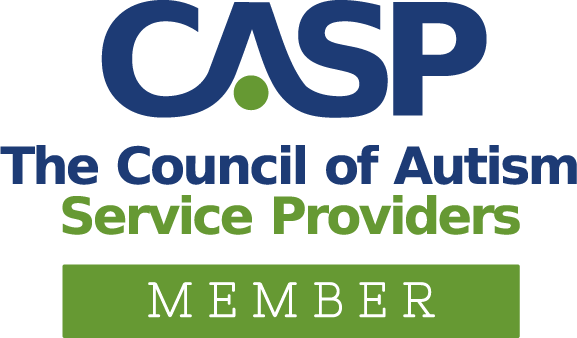B.F. Skinner is a renowned psychologist and behaviorist who developed an innovative concept known as verbal behavior in 1957. Skinner formally defines verbal behavior as behavior that is reinforced through the mediation of the listener, according to the Journal of Educational Psychology. In more general terms, Skinner’s verbal behavior teaches language with a focus on the meaning of a word and its purpose while considering the impact of communication on the environment.
Skinner’s analysis of language and explanations of verbal behaviors led to significant breakthroughs in the field of Applied Behavior Analysis, also called ABA therapy, and has had a profound impact on how we shape human communication and behavior. In the context of autism spectrum disorder (ASD) and ABA therapy, verbal behavior is critical to helping those on the spectrum learn language by connecting words to their function to acquire their needs and improve outcomes, according to Autism Speaks.
Over time, learners associate language and words with access and favorable results, so communication becomes valuable and motivating, leading to actual life application. In this blog by ABA Centers of America, we will explore Skinner’s verbal behavior, how it works within ABA therapy, and most importantly, its advantageous effects on those who identify with autism or other forms of neurodiversity. We’ll also explore certain misconceptions that surround verbal behavior theory and ways to address them.
So, keep reading to learn more about the world of verbal behavior and this core component of ABA therapy. Visit us here for more information about ABA Centers of America in the New Hampshire and Massachusetts region or to read more autism-related blogs.
B.F. Skinner and Verbal Behavior
According to Skinner, it’s possible to influence and reinforce verbal behavior through consequences and rewards, just like any other behavior that individuals learn. Verbal behavior does not focus on words as proper labels. Instead, it teaches the purpose of using words by demonstrating why they are helpful to communicating ideas and gaining access to the things individuals want and need.
Skinner’s theory has been an influential tool in the field of ABA therapy, providing insights into how language development can be encouraged and motivated in individuals with language delays or other communication difficulties.
By understanding Skinner’s verbal behavior theory, ABA providers and educators can more comprehensively design strategies to promote language building and improve individuals’ access to what they need more suitably.
Types of Operants in Verbal Behavior
Language occurs under different operants. These operants serve other functions to the person. According to skinners analysis, verbal operants consist of:
- Mands are requests or demands for something, such as “I want water.”
- Tacts are labels or descriptions of something, such as “That’s a blue car.”
- Intraverbals are responses based on previous verbal statements, like “Where should we go next? or “Going to the park.”
- Echoics are vocal imitations or repetitions of sounds, words, or phrases used by others. Examples include repeating “mama” after hearing someone else say it or mimicking animal sounds.
While neurodivergent individuals may struggle with communication, utilizing these types of operants can assist in their ability to express their wants and improve their verbal behavior over time.
How Skinner’s Verbal Behavior Has Transformed ABA Therapy
The verbal behavior model created by Skinner serves to be remarkably helpful in supporting children with developmental disabilities, particularly those diagnosed with ASD, in improving their verbal behaviors and communication skills. Skinner focused on teaching children the purpose of a word before determining its meaning to ensure appropriate and functional application of the words.
The incorporation of verbal behavior in ABA therapy led to the development of advanced techniques that help children develop vocal skills and language and improve social interactions so they can participate in life more often and in their surrounding world. Thanks to Skinner’s work, individuals diagnosed with ASD are now more able to work on expressing their needs and emotions more efficiently and feel understood on their level.
Common Misconceptions about Skinner’s Verbal Behavior
A common misconception surrounding verbal behavior is that it involves using rote memorization instead of genuine communication. Another is that it only works for children with limited language abilities rather than being applicable to a wide range of learners.
In reality, Skinner’s verbal behavior is a complex and nuanced approach that emphasizes natural language use and reinforcement of productive communication, so the learning feels organic and can be effortless if necessary. By dispelling these misconceptions and exploring the full potential of Skinner’s principles, we can help more individuals with developmental uniqueness achieve greater independence and success throughout their daily lives.
Using Verbal Behavior in Everyday Interactions with Individuals with ASD
Skinner’s verbal behavior techniques can be a helpful tool in providing individuals with the support and guidance they need to thrive in everyday situations, even outside of ABA therapy sessions. Here are a few simple tips caregivers and providers can use to implement the techniques more often:
1. Focus On Positive Reinforcement
Do your best to praise and acknowledge positive behaviors rather than just correcting maladaptive ones. Offer replacement behaviors, when possible, or redirect children to means of gaining what they need or want more appropriately.
2. Use Clear and Concise Language
Be clear when communicating and repeat important information as needed.
3. Use Visual Aids When Possible
Visual aids can also be effective in promoting communication skills in those who may struggle with verbal behavior, making it easier to grasp the meaning and purpose of words while applying them.
4. Remember to Approach Interactions with Care, Playfulness, and a Friendly Demeanor!
The right approach to communication can make all the difference in building strong and meaningful connections while working on verbal behavior.
Skinner’s Verbal Behavior Still Helps Improve the Lives of Those with ASD Alongside ABA Therapy!
When it comes to improving the lives of individuals with ASD, few things have had as significant an impact as Skinner’s verbal behavior. Through applied behavior analysis, this groundbreaking theory has helped countless people develop more comprehensive language skills to communicate effectively with others around them. However, the impact of Skinner’s verbal behavior goes far beyond just language; it has also helped foster greater independence, improved social encounters, and given a sense of empowerment to those living on the spectrum.
So, if you or a loved one is struggling with communication or other developmental challenges, know that there is hope and help available thanks, in part, to the impact of Skinner’s work and its influence on ABA therapy.
More About ABA Centers of America!
At ABA Centers of America, we proudly offer comprehensive ABA care for children and teens diagnosed with ASD. Our team of highly-trained ABA providers works closely with ASD families and individuals to develop personalized treatment plans that focus on symptom management while improving communication skills, socializing, and connecting with peers.
Our goal is to provide a safe, supportive, and inclusive environment for individuals with ASD to reach their full potential and flourish in their daily lives. Contact us today by calling us at 844-923-4222 or via this online form to learn more about our ASD services and how we can support your family on your journey towards improved communication skills.
Through our person-centered ABA approach, we have seen tremendous growth and progress in our clients with ASD, leading to enhanced skill sets, more independence, and stronger connections with those around them.







